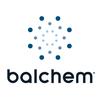
Content sponsored by:
Balchem Animal Nutrition
Not all encapsulated products are created equal
Published: November 4, 2025
Source : Balchem
Spotlight: “Encapsulated nutrients can provide consistent, reliable and cost-effective alternatives to traditional feedstuffs. However, how well these products perform in terms of durability, rumen stability, intestinal release and, ultimately, cow performance vary depending on the encapsulation and manufacturing process utilized. Thus, it is critical that in situ, in vitro and in vivo research be used to evaluate an encapsulate’ s performance in each of these metrics.”
Introduction
Lipid encapsulation is a valuable tool to protect nutrients from ruminal and environmental degradation, with the goal of making the nutrients available for small intestine absorption. With many encapsulated products in the market today, it can be confusing and difficult to choose a product that will perform as expected at a cost-effective price point. These products, and the processes that create them, differ greatly in design, technology, and, unfortunately, performance.
High-quality encapsulated nutrients can provide nutritionists with a great deal of flexibility to improve rations and performance while reducing costs. However, not all encapsulated products are created equal. To make the most of the ingredient investment, nutritionists, veterinarians, and producers need to recognize differences between the various encapsulation technologies. This allows informed decisions about which product(s) will be most cost-effective in the rations fed.
Lipid encapsulation
Lipid encapsulation is an effective rumen protection technology utilized across a wide range of nutrients. However, lipid encapsulation is a generic term, and differences exist due to:
- The starting form and inclusion rate of the nutrient
- The coating system utilized
- The manufacturing process used to produce the lipid encapsulate
There are two main types of lipid encapsulation technology: true encapsulation and matrix encapsulation. Matrix encapsulation suspends the active nutrient within a fatty acid matrix while true encapsulation contains a layered coating of fatty acids applied around the outside of the nutrient to form a protective barrier (Figure 1), fully encapsulating the active nutrient in layers of lipid.

Figure 1. Illustration showing the differences between matrix encapsulation and a true encapsulation.
To be effective, an encapsulate must provide:
1) Durability (feed and mixing stability, freeze/thaw stability and shelf-life)
2) Rumen protection
3) Intestinal digestibility
4) Biological Performance
Durability
Durability is the ability of an encapsulated nutrient to withstand the rigors of mixing, transportation and storage, as well as the moisture and acidity of total mixed rations (TMR). Abrasion of the protective coating, cracking, fracturing or particle size reduction can all reduce the amount of nutrient delivered to the animal and even render a product ineffective.
Mix Stability
Minerals are one of the most physically abrasive environments for an encapsulate to be mixed in due to the rough particle shape and hardness of key minerals such as limestone and salt. Excessive mixing can crack, fracture and otherwise damage the coating of the encapsulate. Limiting mixing time and adding encapsulates as late as possible into the mixer (as one of the final ingredients) can help to minimize unnecessary abrasion.
Feed Stability
Research evaluating the TMR stability of both rumen protected lysine and choline products show vast differences in stability across several commercially available products with differing encapsulation technologies (Figures 2 & 3). The significant loss in TMR stability of some of these products illustrate that not all encapsulation technologies are able to sufficiently protect the nutrient from moisture, acidity and microbes in the TMR. These findings highlight that TMR stability must be accounted for as damage to the protective coating of these products may occur prior to consumption by the cow, potentially reducing the efficacy of the encapsulates.

Figure 2. TMR stability of commercially available rumen protected lysine products.

Figure 3. TMR stability of commercially available rumen protected choline products. Freeze/thaw stability
A less obvious and often overlooked issue is freeze-thaw stability of lipid encapsulates. When lipid encapsulates are frozen and then thawed, the coating can expand and contract. This allows water to penetrate during storage or in the rumen, resulting in a loss of nutrient protection. Some lipid encapsulates are not freeze/thaw stable.
Temperature
Another often-overlooked factor that can affect coating integrity is temperature. Feed encapsulates are not robust enough to withstand the temperatures and pressures associated with pelleting. High temperatures designed to gelatinize starch and deliver a harder pellet will damage encapsulates, adversely affecting nutrient payload protection. In addition, the pressure associated with pelleting can crack or fracture encapsulates, further degrading nutrient protection.
Rumen protection
Nutrients in unprotected form such as choline, niacin, lysine and methionine are almost completely degraded in the rumen via microbial fermentation (> 87%), potentially leaving very little nutrient available for intestinal digestion and absorption. Rumen protection refers to the encapsulation system’s ability to protect a nutrient from degradation in the rumen so that it can pass into the abomasum and small intestine for utilization by the animal. Ruminal degradation is often determined in situ or in vitro. In situ studies suspend dacron bags containing the rumen protected products inside the rumen of a cannulated cow to measure stability of the encapsulate. In vitro studies use lab-based procedures with either collected rumen fluid or solutions that mimic the rumen environment to determine degradation. In either case, digestibility of the encapsulates can be measured at a single time point or at multiple points in time.
Intestinal Release/Bioavailability
The key to making an efficacious encapsulate is to create a product that not only resists ruminal and environmental degradation, but can then be released and digested in the abomasum and small intestine. Developing an encapsulated product with a high level of durability and resists microbial degradation in the rumen may come at the expense of intestinal digestibility. Depending on the nutrient of interest, in vivo and in vitro methodologies can be utilized to test an encapsulate for intestinal release. In general, in vitro methodologies that mimic the digestive system of an animal are relatively quick and inexpensive but only provide relative rankings in terms of bioavailability. However, in vivo methodologies performed within the animal, such as stable isotope and selenomethionine, provide more accurate and precise bioavailability estimates for encapsulated nutrients.
Biological Performance
Biological performance observed in the animal once the encapsulate is fed becomes the ultimate and final test of efficacy. Responses observed may be related, but not limited, to milk and components, health and reproduction as well as offspring health and growth. These responses will also vary depending on the nutrient that was encapsulated. Positive biological responses are observed when all three components of a well-made encapsulate are met (durability, rumen stability and intestinal release).
Summary
Encapsulated nutrients can provide consistent, reliable and cost-effective alternatives to traditional feedstuffs. However, how well these products perform in terms of durability, rumen stability, intestinal release and, ultimately, cow performance vary depending on the encapsulation and manufacturing process utilized. Thus, it is critical that in situ, in vitro and in vivo research be used to evaluate an encapsulate’ s performance in each of these metrics.
The ultimate measure of an encapsulated nutrient is the cost per unit of bioavailable nutrient. This is a function of the cost, durability, rumen protection and intestinal digestibility. To get the best value, just ask a few simple questions:
- Is the product durable enough to withstand feed/mineral mixing, time in a TMR, manufacturing and storage, including freeze-thaw cycles, so that it maintains its ability to protect the nutrient in the rumen?
- Does the product deliver adequate rumen protection over time to ensure a high percentage of the nutrient reaches the intestine for absorption?
- Has the product been tested in vivo to have a bioavailability value that reflects the durability, rumen protection and intestinal absorption supported by the manufacturer’s research?
- Is the bioavailability data backed by in vivo performance results i.e. production or health responses?
Ask to see the research and quality specifications to ensure the product considered will deliver the expected levels of bioavailable nutrient to the cow.
Related topics:
Recommend
Comment
Share

Would you like to discuss another topic? Create a new post to engage with experts in the community.



